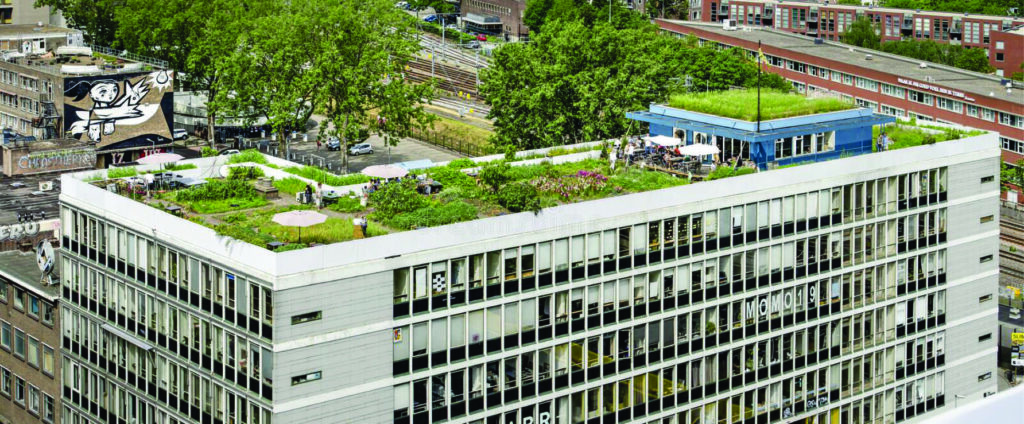Rooftop farming is the vogue in major cities around the world. Though considered an innovation in our times, it has been in practice since ancient times.

Urban agriculture is a way of restoring a percentage, however minute, of plant and animal life destroyed during the development of towns and cities. Rooftop farming is a form of urban agriculture that incorporates farm spaces into the architecture of buildings.
Growing food on rooftops makes a lot of sense- both for food security and for the environment.
Many towns in Nigeria pride themselves as commercial and innovation hubs; but are troubled by overpopulation with the attendant problems of unemployment,poverty, urban waste and squalor.
Often described as a very energetic, these cities are typified by busy marketplaces, traffic hold-up. There are also, smells from roadside fries and emissions from diesel and other forms of electric generators.
So, in spite of the acclaimed dynamism and prosperity of Nigeria’s urban areas, their wastes and pollution could be approaching a hazardous range. In Lagos for example, the air needs continuous assuagement to make it safer for residents. This is a major purpose that urban agriculture; especially rooftop farming could serve.
Nigeria’s urban settlements, especially Lagos, the industrial flagship, can key into some of these moves to safeguard the health of their teeming populations. Developers can opt for rooftops that not only serve for shelter from rain but also as a farmland.
A structure which occupies one or more plots of land can, through its rooftop space, provide the same amount of farm space. The innovation and aesthetic appeal of this approach also makes it a great tourism investment.
This idea may not be applicable to old buildings, they are best planned from the outset. This is where urban new-layouts that are still on the drawing board in diverse parts of the country can borrow a tip. Architects and structural engineers can also bring it up at their confabs this year for further discourse for many green reasons.
There are commercial buildings, shopping malls and church buildings that take up miles of landmass. Many of them are actually found in Lagos, Kaduna, Abuja and their environs. Such erections can be maximised for rooftop farm activities that will be of benefit to tenants, church members and many others.
Government can assist unemployed and under-employed residents who wish to farm but are are challenged by land space to explore this option. So, it can be counted as a noteworthy poverty fighting strategy.
In Australia, rooftop farms now absorb substantial organic wastes to grow organic foods and fruits. In Japan,they are now used to cultivate grains like soybeans and rice which supply produce to surrounding eateries and to households within the host complex.
In the United States however, most rooftop gardens grow vegetables like tomatoes and lettuce and some are beginning to incorporate poultries, apiaries (bee farms for honey) and even aquaculture.
To deliver the expected goods in both aesthetics, structural integrity and profitability, the design and structure should be put together in consultation with engineers and other other relevant professionals like horticulturists, agronomists, town planners to ensure sustainability.
Apart from the provision of fresh fruits, vegetables, and other food advantages, ongoing experiments overseas have shown that rooftop farms help to mitigate urban heat island effect. They keep buildings cool in hot weather and providing insulation from extreme cold.
The plants absorb the heat from the sun, while the walls remain cool. This reduces the need for air-conditioning thereby saving utility costs. It also reduces the need for electricity generators on hot days when there is power outage. Consequently, there would be reduced emissions and noise pollution.
Moreover, rooftop vegetation will breathe in carbon dioxide accumulated through congestion and greenhouse effects and exhale oxygen to relieve the air. Resultant ripple effects will include a reduction in stress-induced ailments and savings on health costs.
Rooftop agriventures are said to provide protection from thunder storms and absorb storm water by delaying and reducing rain runoff from the roof. Some of the water can even be stored for farm irrigation during the dry season. The benefits are endless.
So, for the Government, it is a compelling idea when considering options for reducing the hazards of flooding. For property developers and entrepreneurs, it is a viable idea.
